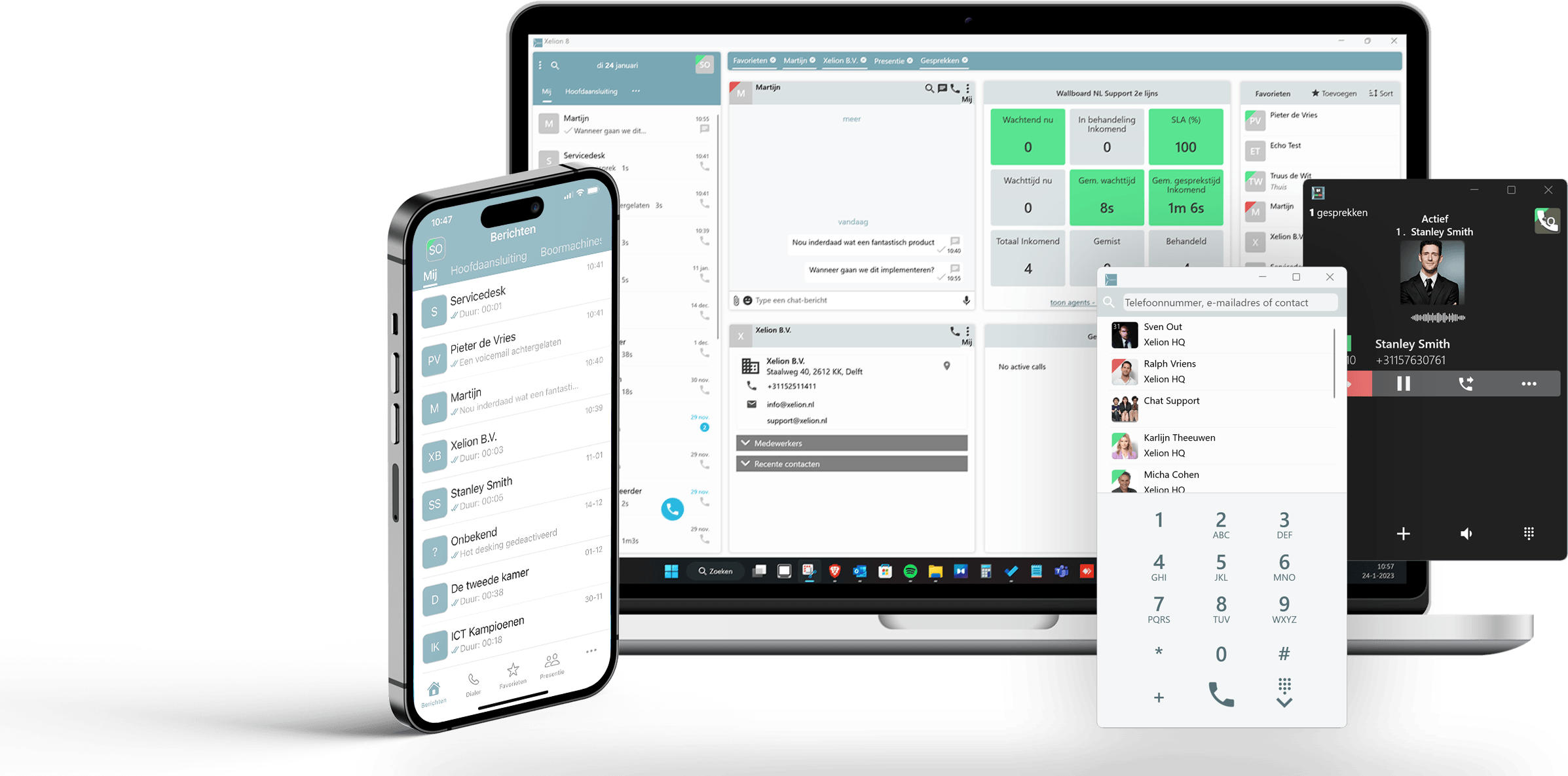In a competitive landscape where margins are under pressure and customer expectations are continually increasing, it is rare for there to be an accessible new service area that is both profitable and attainable and that is not already saturated, but that is the situation today with Unified Communications (UC or UCaaS).
Managed Services Providers (MSPs’) have an opportunity to provide their customers with a range of options that they can efficiently and profitably deliver, and customers are seeking advice and support from their trusted advisors.
By adding UC to their offerings, an MSP can:
- Increase the ‘stickiness’ of their relationships with customers.
- Generate substantial monthly recurring revenue (MRR).
- Expand into vertical and specialised markets.
- Generate more business from I.T. projects and services to complement their UCaaS offerings.
- Increase long term profits by offering the right Unified Communications platforms and partners.
So, what’s stopping many MSPs’ from embracing the opportunity of Unified Communications?
It’s a good question, but there are challenges involved with adding Unified Communications services to your MSP. Read on to learn about those challenges and how an MSP can tackle them, as well as some of the key opportunities to increase their revenues and profits from Unified Communications that many MSPs’ are missing.
Fear of billing and compliance
Everyone hates billing. Well, actually, at Activa Communications we quite like managing complex billing, but that’s another story. Managing the billing of UC services requires the use of specialised platforms that can correctly rate and process thousands or even millions of individual call records. There are also regulatory requirements of how billing and payments need to be managed to consider. With a suitable system in place, there is then the cost of needing to manage and operate the system correctly, which can be done efficiently at scale but is often far less efficient for an MSP seeking to bill only their own customers.
There are also many regulatory and compliance requirements to be met. It’s true that there are lots of companies in the marketplace that have just started selling “telco” products but who don’t comply with the regulations, and perhaps don’t know that the regulations apply to them, but put simply – if you are offering, providing or billing a customer for “telco” products of any kind, then the regulations apply to you. For an MSP planning to operate within those requirements a lot of effort is required to put all of the relevant systems and procedures in place, and to then manage the ongoing obligations, including:
Managing number porting
There are several codes that set out the procedures for the porting of numbers, including codes for mobile numbers, for fixed line numbers, and for inbound service numbers (such as 1300 and 1800 numbers), and in each case they require that both carriers involved with a number porting order (the gaining carrier and the losing carrier) act in specific ways.
Integrated Public Number Database (IPND) compliance
Providing voice services also involves assisting with the upkeep of the Integrated Public Number Database (IPND), which is a database of Australian phone numbers and owner details, and the equivalent service in New Zealand.
Profitability concerns
We know that being an MSP is hard, and that the competition is intense. Everyone is looking for ways to grow and to improve profitability. It seems that many MSPs’ are not taking advantage of the opportunities to generate long term profits from Unified Communications, and one of the possible concerns is that it will be difficult to be competitive when entering this market. We feel that those concerns are unfounded, and that the current UCaaS market provides many opportunities for MSPs’ to not only compete but to generate substantial long-term revenue and profits.
A key change that has taken place in the UC market is the very nature of contact centres. In the past, only large businesses would consider building a contact centre, and the investments required were significant. Today, even the smallest businesses can use UC platforms to provide great multi-channel customer service, without even having a single dedicated contact centre or customer service staff member – literally anyone in the business can perform the functions needed, provided that you have a modern UC platform in place.
At the same time, the cost of UC platforms has fallen dramatically, and features and functions that were previously only available in specialised systems are now available in many Unified Communications systems designed for small to medium businesses, and in fact businesses of any size.
Today, an MSP can generate strong profits by offering Unified Communications to customers, and as a whole the retail profit margins of Unified Communications are significantly higher than those of I.T. services.
An MSP can choose to take on the responsibility of becoming a ‘telco’ and offering the full suite of communications services, using a variety of wholesale carriers, and this approach will achieve the highest profit margins. However, this approach comes with a great deal of responsibility and overheads, and just the costs involved with compliance mean that some significant scale is required before the venture would be profitable at all. Another approach is to partner with an established provider and simply refer customers to them, in return for receiving a commission of some kind. Generally, this approach would require very little from the MSP, and of course the commission received would be much smaller as a result.
There is a middle ground between those two extremes where an MSP can choose to partner with a provider who takes care of the difficult and costly aspects of offering Unified Communications, leaving the MSP to actually sell the solution to their customers and provide a level of implementation and ongoing support that they are comfortable with. The profit margins achieved would of course vary with the level of responsibility that the MSP is accepting, but in our view this approach is more in line with most MSPs’ are seeking to do with the technology vendors generally.
Complimentary services
A key opportunity for MSPs’ adding Unified Communications to their customer offerings is the wide range of complimentary services that can be offered. A typical UCaaS deployment requires that the customer address a number of other areas, including updating their networking, security and equipment, and MSP’s also have the opportunity to develop and implement integrations to connect the UC platform to the CRM or ERP systems of the customer.
Some key complimentary services that can be offered are explored further below –
Technology refresh projects
Customers will require an up-to-date fleet of computer systems, as well as phone handsets and headsets, in order to get the most out of their UC platform. They may also need to update software applications and arrange for staff to be trained in new software systems. All of these types of projects can be a necessary part of deploying a new UC platform that the MSP can assist their customer with.
Networking and security
Most Unified Communications platforms will involve the use of VoIP or SIP trunking, and so the quality and security of the customer’s Internet connections is critical to the quality and reliability of their new communications platform. The customer’s internal network also needs to be considered, with simple questions such as how power will be delivered to the phone handsets and how voice traffic will be given priority over other traffic on the Wi-Fi network leading to opportunities to upgrade and improve the customer’s internal network.
Integration services
When a Unified Communications platform is deployed there are always other applications that the customer needs to use in the course of their business, and the more integrated those application are with the UC platform, the more efficient the customer’s operations can be. Most UC platforms offer integrations with major Customer Relationship Management (CRM) applications, and where an integration may not be available there are always third-party providers and tools that can be used to develop specific integrations. MSPs’ can offer a range of services to customers to help integrate their applications with a new UC platform and deliver substantial value to the customer in the process.
The importance of the user interface (UI)
Perhaps the most overlooked aspect of UC platforms is the user interface, and specifically how easily the system can be managed and used by the customer. A well-designed user interface will enable you to offer customers an experience that empowers them to manage their UC platform directly, which in turn reduces the amount of support and administration work that they require from you.
Ease of use
A platform that provides a clean and simple interface that prioritises efficiency and ease of use will always be superior to one that exposes every possible function of the system, and yet many UC platforms seem to focus on overloading the user interface with displaying every possible function of the system at all times. A system that provides a simple, easy to use interface can still provide all of the power and functionality of a system that is complex and difficult. The secret lies in the design of the user interface, and in providing functionality when and where the user needs it.
Low-effort
When the UC platform empowers the customer’s team to control their communications, responding to changing workloads and team locations, an added benefit is that as their technology support provider they actually need less assistance from you to make simple changes and to manage the platform. As an example, in some UCaaS platform, such as Xelion, the customer can view in real-time the status and availability of their entire team, and dynamically control exactly who is receiving calls, even using their smartphone, and they don’t need to call their MSP to ask for assistance.
Stickiness
When all staff are trained in the communications system and know how to use all the features of the platform, it’s often inconvenient to have to re-train the whole team. Aside from the costs, the disruption of changing to a new system is often a source of concern, and if there are no tangible benefits from the change, customers will tend to stick to what they know. As an MSP, if you can demonstrate the benefits of your UCaaS offering you can then be confident that the customers you win will be using your platform for the long-term.
How Activa Communications Can Help
We hope that our article about the scale of the opportunity for any MSP to add Unified Communications to their service offerings has piqued your interest. If you would like to know more, click HERE to access our whitepaper “How your MSP can profit from Unified Communications“.
If you’re looking to add Unified Communications to your MSP’s offering, our team can help. We’re channel-only and we empower MSPs’ to offer Unified Communications and other services to their customers, and we also we seek to address all of the challenges that MSPs’ face when moving into the voice and UC fields for the first time. Our partners are able to choose the engagement model that suits their needs and their customers, and we work with MSPs’ to drive increased monthly recurring revenue and profits from offering UC services.
You can learn more about Xelion, our Unified Communications offering HERE, or get in touch with our friendly team HERE to discuss the benefits of our Partner Program which provides everything you need to create ongoing revenue streams.



